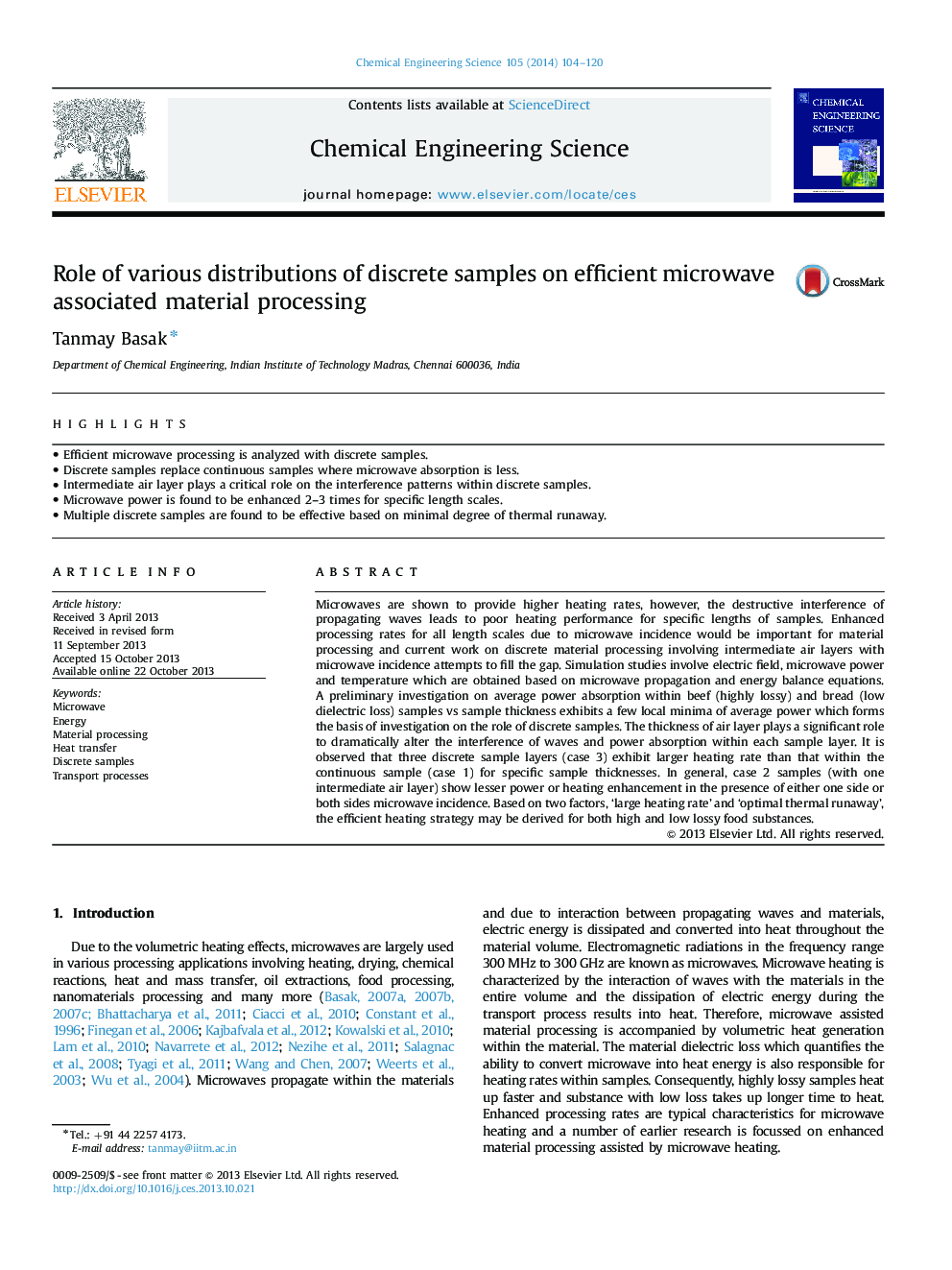| Article ID | Journal | Published Year | Pages | File Type |
|---|---|---|---|---|
| 154981 | Chemical Engineering Science | 2014 | 17 Pages |
•Efficient microwave processing is analyzed with discrete samples.•Discrete samples replace continuous samples where microwave absorption is less.•Intermediate air layer plays a critical role on the interference patterns within discrete samples.•Microwave power is found to be enhanced 2–3 times for specific length scales.•Multiple discrete samples are found to be effective based on minimal degree of thermal runaway.
Microwaves are shown to provide higher heating rates, however, the destructive interference of propagating waves leads to poor heating performance for specific lengths of samples. Enhanced processing rates for all length scales due to microwave incidence would be important for material processing and current work on discrete material processing involving intermediate air layers with microwave incidence attempts to fill the gap. Simulation studies involve electric field, microwave power and temperature which are obtained based on microwave propagation and energy balance equations. A preliminary investigation on average power absorption within beef (highly lossy) and bread (low dielectric loss) samples vs sample thickness exhibits a few local minima of average power which forms the basis of investigation on the role of discrete samples. The thickness of air layer plays a significant role to dramatically alter the interference of waves and power absorption within each sample layer. It is observed that three discrete sample layers (case 3) exhibit larger heating rate than that within the continuous sample (case 1) for specific sample thicknesses. In general, case 2 samples (with one intermediate air layer) show lesser power or heating enhancement in the presence of either one side or both sides microwave incidence. Based on two factors, ‘large heating rate’ and ‘optimal thermal runaway’, the efficient heating strategy may be derived for both high and low lossy food substances.
